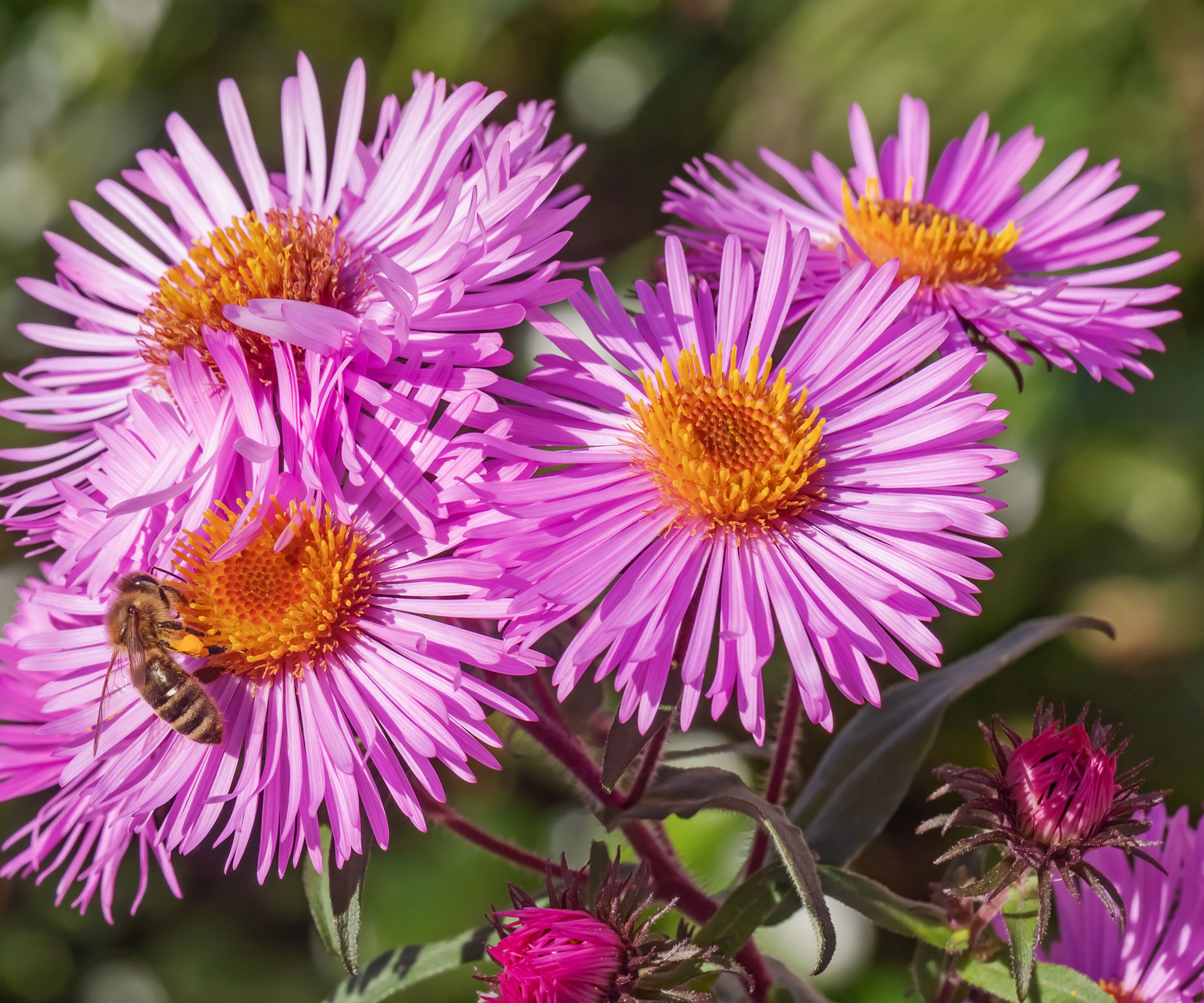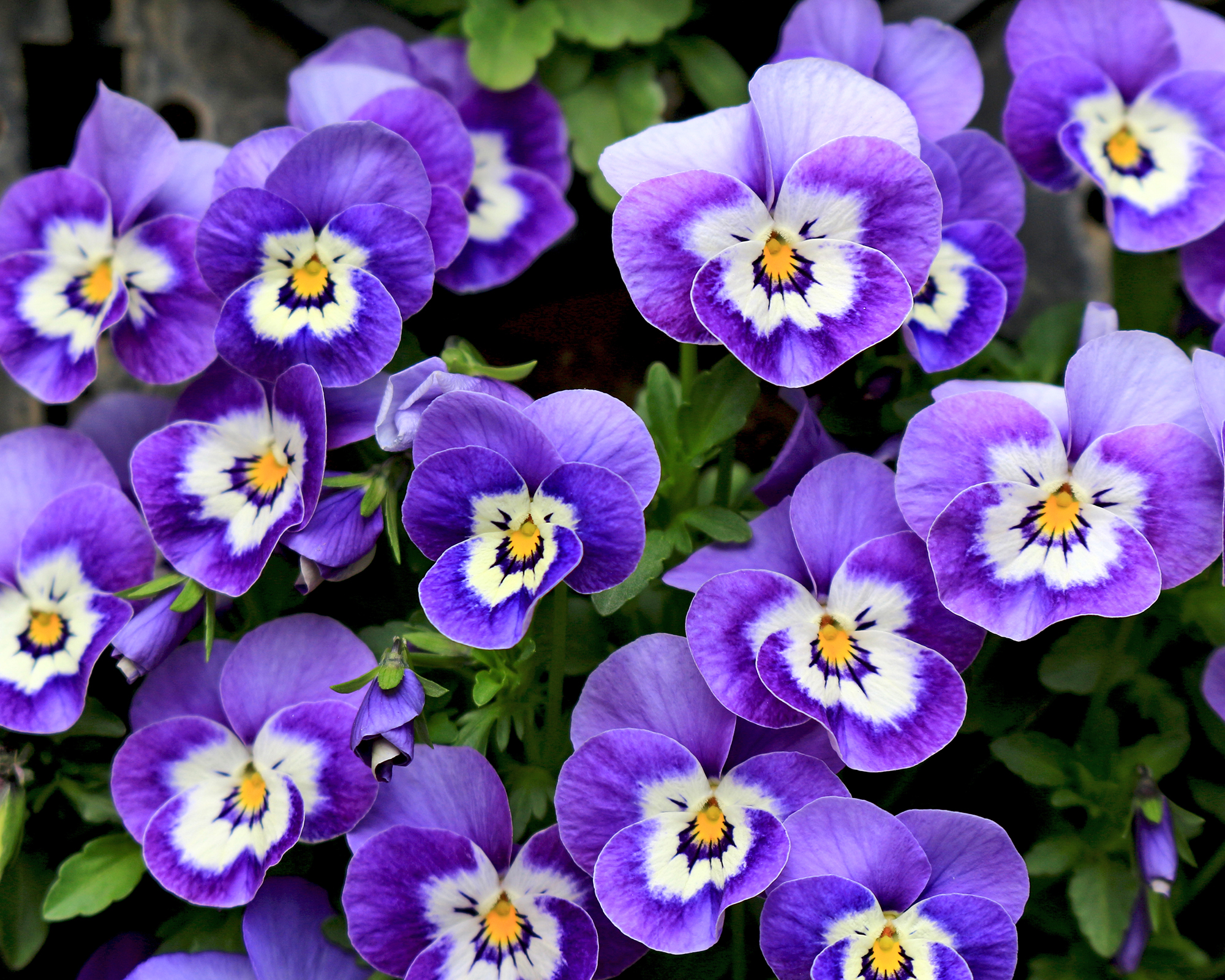8 Fall-Blooming Flowers For Front Yards – Maximum Curb Appeal Guaranteed
Create a vibrant, inviting front yard that glows with fall color and lasts well into the cooler months.

Melanie Griffiths

Colorful blooms used strategically with shrubs and ornamental trees are great for adding curb appeal to the front of your home. Many flowers bloom in spring or summer, but what about fall color?
Choosing fall flowers with long, overlapping bloom times will ensure continuous color throughout the season. This is one of the most important small front yard landscaping ideas as some plants bloom throughout fall, while others may only provide color for a few weeks.
Think about the layout of your front yard and the height of plants. Taller flowers work well in the back of a flower bed or near the house, while shorter flowers are great for borders or edging pathways. Team them with structural shrubs for front yards and trees that boost curb appeal. If you don't want to put in a lot of work, then opt for low-maintenance plants for front yards.
Choose colors that complement the appearance of the house and garden color scheme. Fall flowers offer rich, warm hues like reds, oranges, yellows, and purples, but you can also find softer tones like white and pink, depending on the look you want to achieve.
Before selecting fall flowers, it's important that you know your USDA hardiness zone. This will help you to choose varieties that thrive in your area in the colder months. Some flowers are much more cold-tolerant than others.
These fall flowers are great for extending the growing season in your front yard with colorful late-season blooms.
1. Chrysanthemum

Also known as hardy mums or garden mums, chrysanthemum (Chrysanthemum spp.) is a favorite for fall decorating. They bloom right up until the frost hits and come in a variety of autumn colors: deep red, rust orange, golden yellow, creamy white, and more.
Sign up for the Gardening Know How newsletter today and receive a free copy of our e-book "How to Grow Delicious Tomatoes".
While mums are perennials, many people use them like annuals, buying potted mums in fall and letting them die off in winter. If you want to keep garden mums year-round, plant them in the ground immediately. Spring is the best time to plant them, but if you can get them in the ground in early fall, they may survive.
Whether you grow them as annuals or perennials, mums need consistently moist soil that drains very well, full sun or partial shade, and plenty of pinching to keep the flowers coming.
2. New England Aster

New England aster (Symphyotrichum novae-angliae) is a native perennial, hardy in zones 4 through 8, that produces stunning daisy-like flowers in fall. Plant these in front yard beds with summer-blooming perennials to extend flowering. They like moist, well-drained soil and full sun.
Your New England aster might struggle a little on the hottest days of summer, but regular watering should keep them going. You’ll be rewarded with an abundance of fall flowers in shades of blue, pink, purple, and white. Choose varieties based on the color you like. They are otherwise very similar.
3. Perennial Sunflower

Everyone knows towering annual sunflowers, but did you know there are more diminutive perennial sunflower species? Look for smaller species like H. debilis, (beach) H. mollis (ashy), and H. occidentalis (western), which grow between one and four feet (0.3 to 1.2 m) tall. Taller sunflowers tend to overwhelm front yard flower beds.
Like their annual counterparts, perennial sunflowers have cheerful yellow blooms with dark centers, but the flowers are generally smaller. They need full sun and are hardy in various zones depending on the species. Beach sunflower is a great choice for zones 8 through 11, while western and ashy sunflowers are hardy through zone 3.
4. Blanket Flower

Blanket flowers (Gaillardia spp.) are long-blooming perennials that grow two to three feet (0.6 to 0.9m) tall. They have a wide hardiness range, from zone 3 through 10, and prefer full sun but will tolerate poor soil as long as it drains well.
Blanket flower species produce daisy-like flowers from summer well into fall. Different species and varieties come in reds, yellows, oranges, pinks, and purples, often with concentric rings of color. They have a compact, mounding growth habit that is ideal for beds and borders.
5. Pansy

Pansies (Viola x wittrockiana) are annuals in many growing zones, hardy in zone 6 and upwards. Because they are not very heat tolerant, they make great annuals for both spring and fall.
Plant pansies in front yard beds or containers in late summer or early fall, whenever temperatures begin to cool. They only grow four to eight inches (10 to 20cm) tall, so they do well as borders or in front of taller plants.
Because they are so popular, pansies have been bred for a variety of color combinations of white, yellow, blue, red, purple, pink, and orange. The possibilities are nearly endless. Grow them in full sun or partial shade and in well-drained soil.
6. Snapdragon

Like pansies, snapdragons (Antirrhinum majus) are perennials in warmer climates, hardy in USDA zones 7-11, but are often used as annuals. Also like pansies, they grow best in the cooler shoulder seasons.
Plant snapdragons in fall to extend bloom time in your flower beds. They grow up to four feet (1.2m) tall, so put snapdragons against the front of the house as a backdrop to shorter plants, or in front of taller shrubs and small ornamental trees.
Snapdragons bloom profusely in fall with spikes of characteristic flowers shaped like dragon heads and in colors ranging from white and yellow to pink and red. They grow best in full sun or partial shade and in moist soil that drains well.
You can start snapdragons from seed, but allow two to three months from start time to blooming.
7. Marigold

Marigolds (Tagetes spp.) are annuals in most growing areas of North America. These cheerful flowers have long been popular for their blooms in various shades of yellow, orange, and red. They bloom reliably from summer through fall, providing flowers right up until a hard frost. If you pinch early and throughout the season, marigolds will grow densely and bloom prolifically.
Use marigolds in front yard beds and borders. They are great options for continuous blooms but also for hands-off care. They grow reliably and dependably, even when conditions are less than ideal. Ideal conditions for marigolds include full sun, moist but well-drained soil, and warm weather.
These are just a few options for fall color in the front yard. A mix of perennials and annuals along with shrubs and trees create long-lasting visual interest and excellent curb appeal.
8. Black-Eyed Susan

Fall favorites, black-eyed Susans (Rudbeckia hirta) are usually known for their sunshine bright yellow color and daisy-like flowers. However, there are some stunning double-petalled varieties available in bold reds to warm pinks that will stop passersby in their tracks. Try Rudbeckia 'Sahara', 'Summerdaisy Cherry', or 'Enchanted Flame.
Hardy in USDA zones 3 through 9, black-eyed Susan is low-maintenance, easy to grow from seed, and suffers few problems. It thrives in a variety of soil types, with a preference for a neutral pH, and in a full sun to light shade location.
This article features products available from third-party vendors on the Gardening Know How Shop.

Mary Ellen Ellis has been gardening for over 20 years. With degrees in Chemistry and Biology, Mary Ellen's specialties are flowers, native plants, and herbs.
- Melanie GriffithsEditor in Chief
